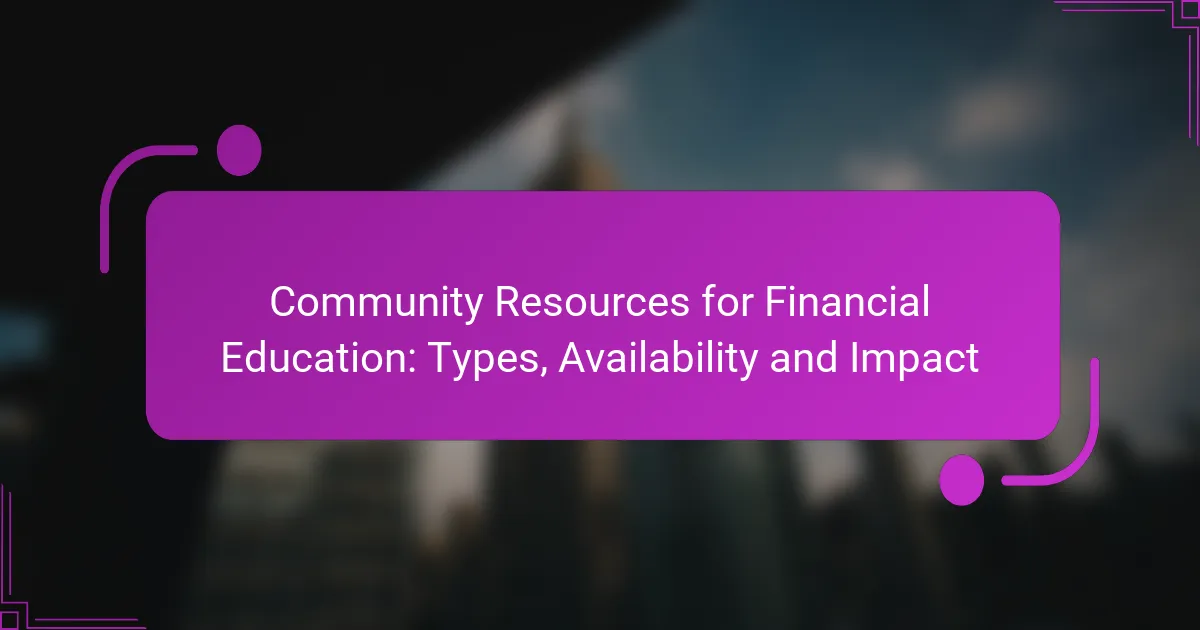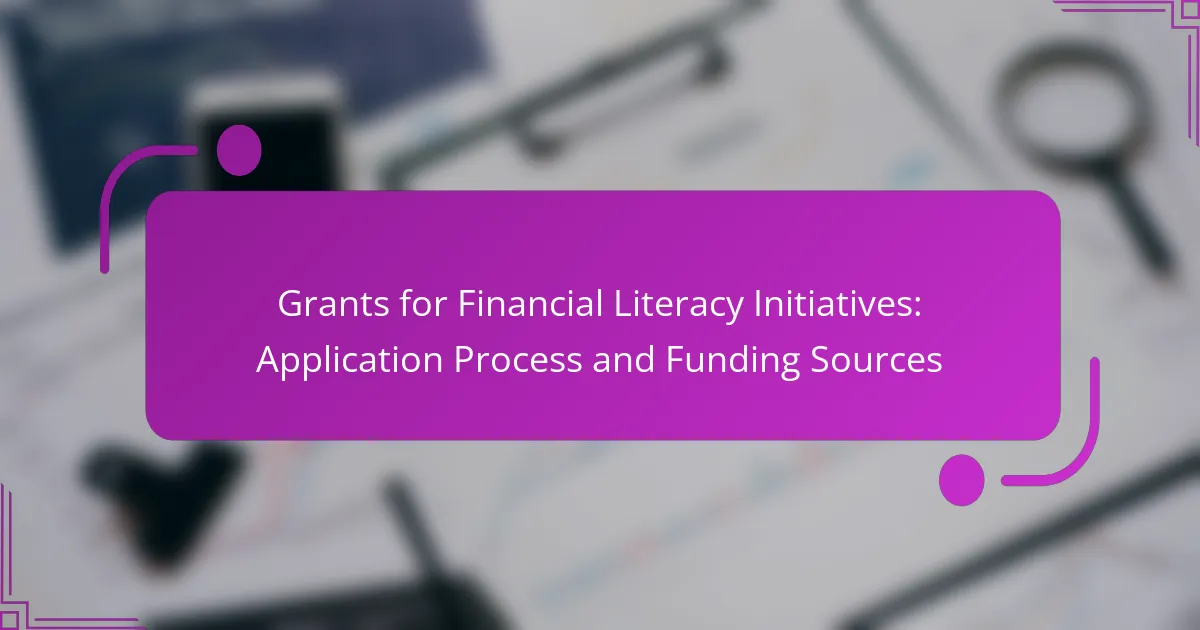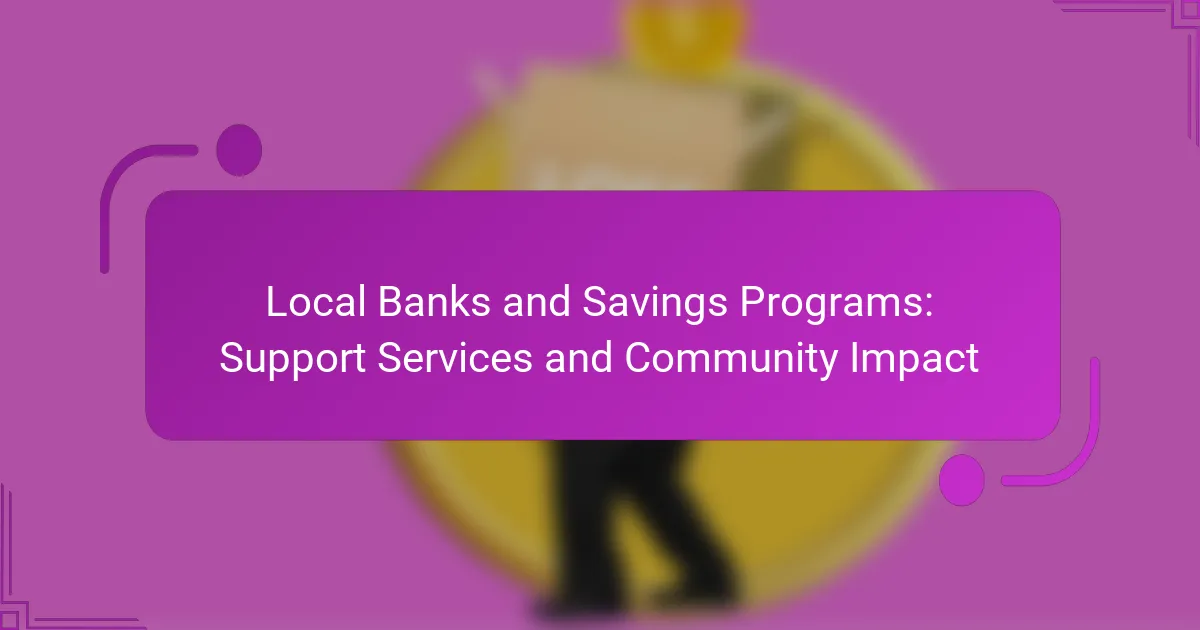Community resources for financial education play a crucial role in enhancing financial literacy across the United States. These resources, which include nonprofit organizations, public libraries, and community colleges, empower individuals to make informed financial decisions and improve their overall well-being. By providing access to essential money management skills, these programs foster stronger community ties and better financial outcomes for residents.
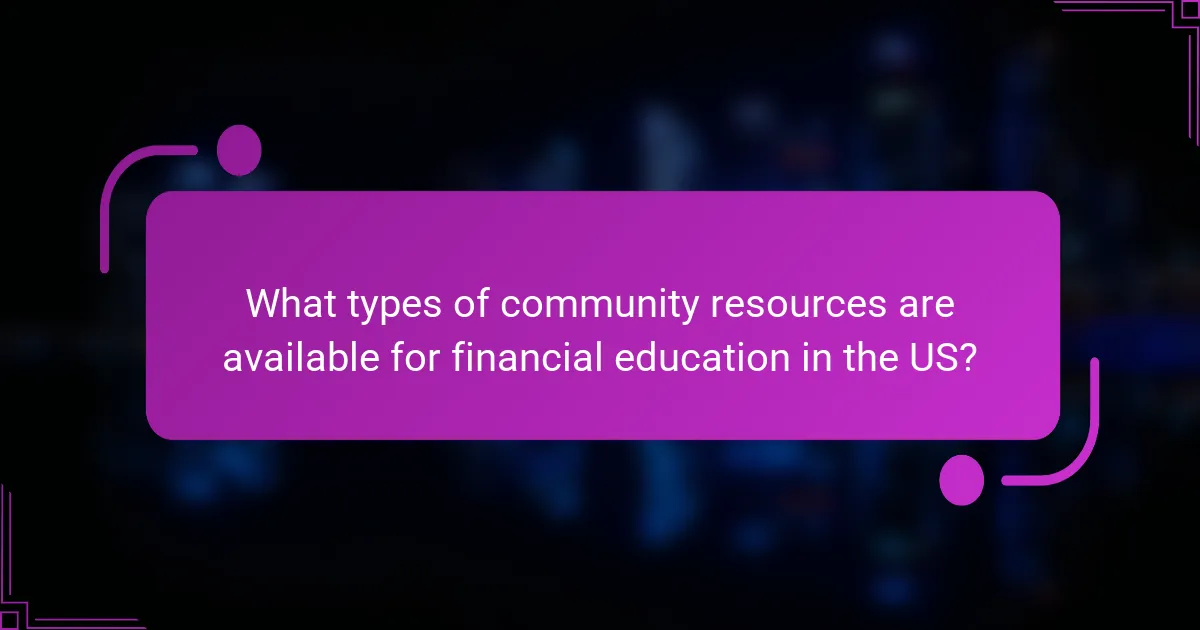
What types of community resources are available for financial education in the US?
In the US, various community resources provide financial education, including nonprofit organizations, public libraries, community colleges, online platforms, and workshops. These resources aim to enhance financial literacy and empower individuals to make informed financial decisions.
Nonprofit organizations
Nonprofit organizations play a critical role in offering financial education through free or low-cost programs. They often provide workshops, one-on-one counseling, and resources tailored to specific demographics, such as low-income families or young adults.
Examples include the National Foundation for Credit Counseling (NFCC) and local credit unions that may offer financial literacy classes. These organizations can help individuals understand budgeting, credit management, and debt reduction strategies.
Public libraries
Public libraries serve as accessible hubs for financial education, often hosting free workshops and providing a wealth of resources. Many libraries offer books, online courses, and access to financial databases that patrons can use to enhance their knowledge.
Some libraries partner with local financial experts to conduct seminars on topics like retirement planning and investment strategies. Utilizing these resources can significantly improve financial literacy without any cost to the individual.
Community colleges
Community colleges frequently offer courses in personal finance, accounting, and business management. These classes are typically affordable and designed to cater to a diverse student population, making financial education more accessible.
Students can gain practical skills and knowledge through hands-on learning experiences, such as budgeting exercises and financial simulations. Enrolling in these courses can provide a solid foundation for managing personal finances effectively.
Online platforms
Online platforms have emerged as a popular resource for financial education, offering courses, webinars, and interactive tools. Websites like Khan Academy and Coursera provide free or low-cost courses on various financial topics, from basic budgeting to advanced investing.
These platforms allow users to learn at their own pace and often include quizzes and practical exercises to reinforce learning. Utilizing online resources can be a flexible and convenient way to improve financial literacy.
Workshops and seminars
Workshops and seminars are often organized by community organizations, financial institutions, or educational entities to provide targeted financial education. These events typically cover specific topics such as home buying, retirement savings, or credit repair.
Attending these sessions can provide valuable insights and networking opportunities. It is advisable to look for workshops that offer hands-on activities or personalized advice to maximize the benefit of attending.
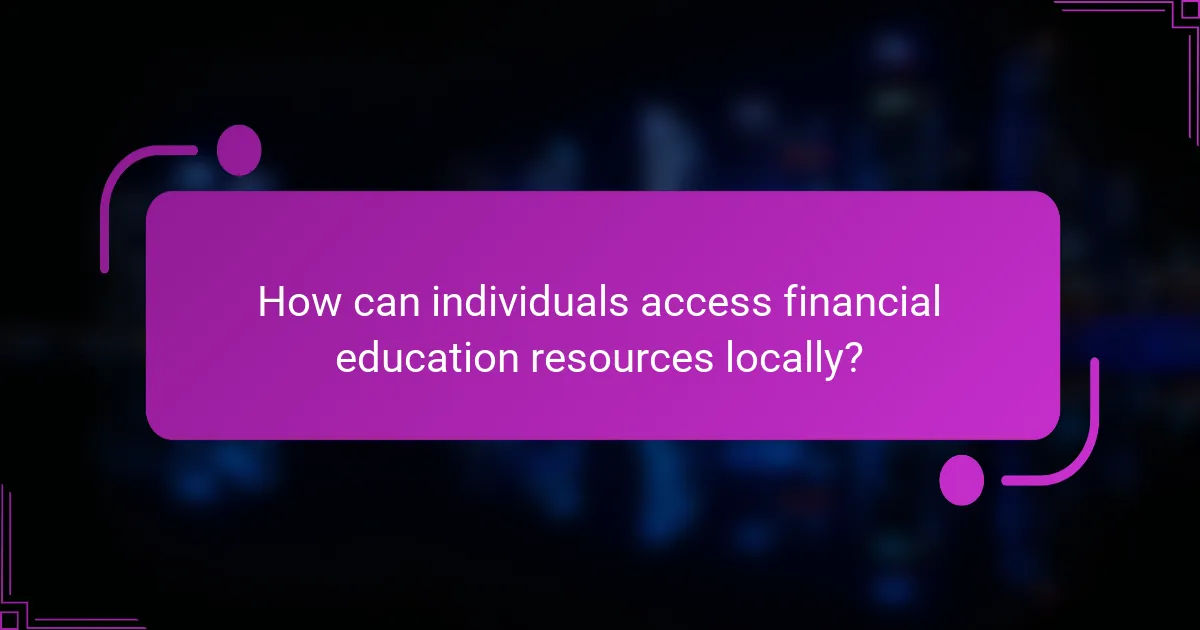
How can individuals access financial education resources locally?
Individuals can access financial education resources locally through various community programs, partnerships, and outreach initiatives. These resources often aim to improve financial literacy and empower residents to make informed financial decisions.
Local government programs
Many local governments offer financial education programs designed to help residents manage their finances effectively. These programs may include workshops on budgeting, saving, and credit management, often provided at no cost to participants.
To find these programs, check your local government’s website or contact community centers. Some municipalities may also provide online resources or virtual workshops to increase accessibility.
Partnerships with financial institutions
Financial institutions often partner with community organizations to deliver financial education. These partnerships can result in free seminars, one-on-one counseling, and resources tailored to specific demographics, such as low-income families or young adults.
Individuals should inquire at their local banks or credit unions about available programs. Many institutions offer online tools and resources that can be accessed anytime, making it easier to learn at your own pace.
Community outreach events
Community outreach events, such as fairs or informational sessions, frequently feature financial education as a key component. These events provide opportunities to learn from experts, ask questions, and access materials that can aid in financial planning.
To participate, look for announcements in local newspapers, community boards, or social media. Engaging in these events can also connect individuals with local resources and support networks that enhance financial literacy.

What is the impact of financial education on communities?
Financial education significantly enhances community well-being by equipping individuals with essential money management skills. This knowledge fosters informed decision-making, leading to improved financial outcomes and stronger community ties.
Improved financial literacy
Financial literacy refers to the ability to understand and effectively use various financial skills. Communities with higher financial literacy rates tend to see more individuals making informed choices about budgeting, saving, and investing. For example, workshops that teach basic financial concepts can help participants grasp the importance of credit scores and debt management.
Access to resources like online courses, local seminars, and community programs can greatly enhance financial literacy. These initiatives often target specific demographics, ensuring that the information is relevant and accessible, which can lead to a more financially savvy population.
Increased economic stability
When individuals possess strong financial education, they are more likely to achieve economic stability. This stability can manifest as increased savings, reduced debt levels, and better preparedness for financial emergencies. Communities can benefit from programs that encourage savings habits, such as matched savings accounts or financial incentives for completing educational courses.
Moreover, economically stable individuals contribute to local economies by spending and investing in their communities. This creates a positive feedback loop where increased financial knowledge leads to better economic outcomes, which in turn supports local businesses and services.
Enhanced community engagement
Financial education fosters enhanced community engagement by encouraging individuals to participate in local initiatives and decision-making processes. When community members understand financial concepts, they are more likely to engage in discussions about local budgets, funding for public services, and economic development projects.
Additionally, financially educated individuals often take on leadership roles within their communities, advocating for policies that promote economic growth and stability. This active participation can lead to stronger community bonds and a collective effort towards improving the overall financial health of the area.
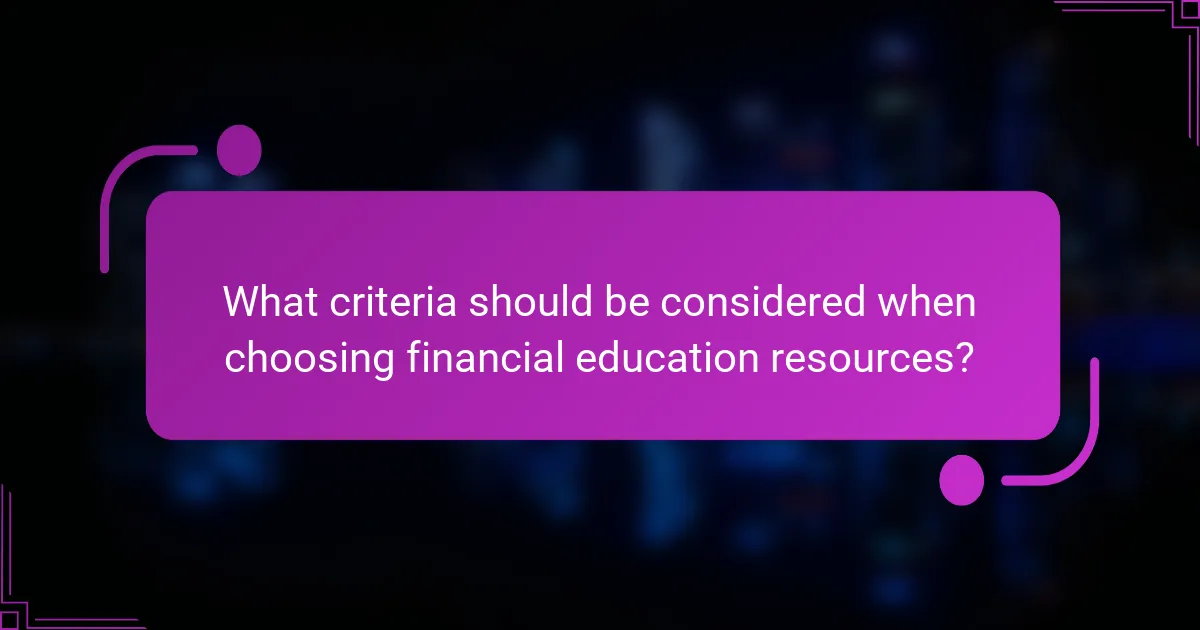
What criteria should be considered when choosing financial education resources?
When selecting financial education resources, consider the provider’s reputation, the relevance and quality of the content, and the accessibility of the materials. These factors will help ensure that the resources are credible, useful, and easy to engage with.
Reputation of the provider
The reputation of the provider is crucial when choosing financial education resources. Look for organizations or individuals with a strong track record in financial literacy, such as accredited institutions, non-profits, or recognized experts in the field.
Check reviews, testimonials, and any affiliations with reputable financial organizations. A well-regarded provider is more likely to offer reliable and effective educational materials.
Content relevance and quality
Assess the relevance and quality of the content offered by the resource. Ensure that the information aligns with your specific financial goals, whether it’s budgeting, investing, or debt management. High-quality resources should be up-to-date and based on sound financial principles.
Consider resources that include practical examples, case studies, and interactive elements to enhance learning. Quality content often features clear explanations, actionable steps, and tools for real-world application.
Accessibility and convenience
Accessibility and convenience are important factors in choosing financial education resources. Look for materials that are easy to access, whether online or in-person, and consider the formats available, such as videos, articles, or workshops.
Resources should be user-friendly and available in multiple formats to accommodate different learning styles. Additionally, consider the time commitment required; resources that offer flexible learning options can better fit into busy schedules.
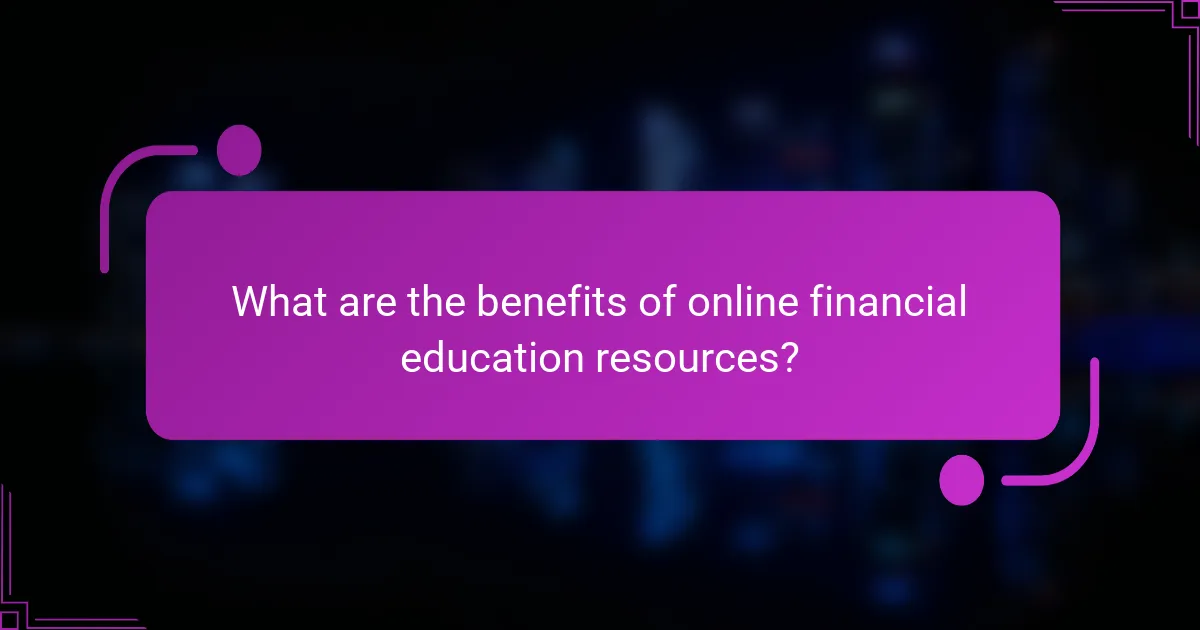
What are the benefits of online financial education resources?
Online financial education resources offer accessible and flexible learning opportunities that can significantly enhance financial literacy. They provide a wide range of materials, from budgeting tools to investment strategies, enabling individuals to make informed financial decisions.
Accessibility of online financial education resources
Online financial education resources are available 24/7, allowing users to learn at their own pace and convenience. This flexibility is particularly beneficial for those with busy schedules or varying commitments, as they can access materials whenever they have time.
Many resources are free or low-cost, making them accessible to a broader audience. Websites, webinars, and mobile apps often provide valuable information without the need for significant financial investment.
Diverse types of online financial education resources
Online financial education encompasses various formats, including articles, videos, podcasts, and interactive courses. Each format caters to different learning styles, ensuring that users can find the method that works best for them.
Additionally, many platforms offer specialized content tailored to specific demographics, such as students, retirees, or small business owners. This targeted approach helps individuals gain relevant knowledge applicable to their unique financial situations.
Impact on financial literacy and decision-making
Engaging with online financial education resources can lead to improved financial literacy, which is crucial for making sound financial decisions. Individuals who utilize these resources often report increased confidence in managing their finances, from budgeting to investing.
Research indicates that enhanced financial literacy can lead to better financial outcomes, such as higher savings rates and reduced debt levels. By equipping individuals with the necessary knowledge, online resources can foster a more financially savvy population.
